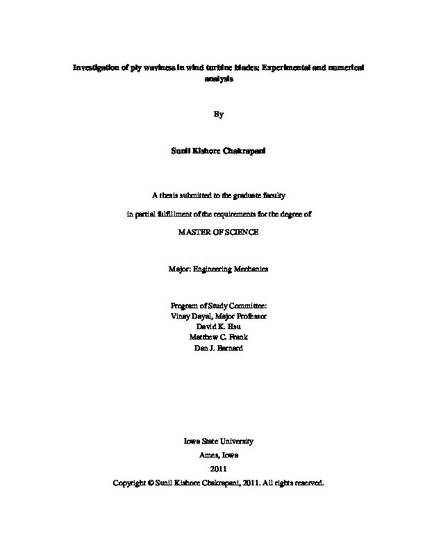
Composite materials used in fabricating wind turbine blades use large tows, stitched fibers which are relatively thick compared to the composites used in many other applications. Thick fibers enables manufactures to save cost of the fiber and build up the thickness quickly, but introduces defects such as waviness, dry patch etc. Waviness in composites has been shown to degrade the tensile and compressive strength of the laminate. Waviness in a critical portion of the blade can lead to the catastrophic failure of the blade which is costly not only from the cost of the equipment but also the loss of power generation.
This thesis presents the results of investigation of intrinsic, discrete, and out of plane waviness in wind turbine blades using non-destructive evaluation. A field implementable, Rayleigh wave based scanning system using air coupled transducers was devised and tested. Further the detected discrete waves (marcels) were characterized in terms of aspect ratio which is a non-dimensional characteristic of the marcel. This kind of system enables manufactures to detect and quantify defects, to determine if it really poses a threat to the structural integrity of the blade. To understand the mechanics better, finite element analysis of wave propagation in wavy laminates was performed and compared to experimental results.
Another area of interest in a blade is the bond joint between spar cap and shear web. This work was undertaken and the bond thickness was measured using contact ultrasonics NDE. Using the initial results a field implementable system was developed and was used for field tests.
Available at: http://works.bepress.com/sunilkishore_chakrapani/4/